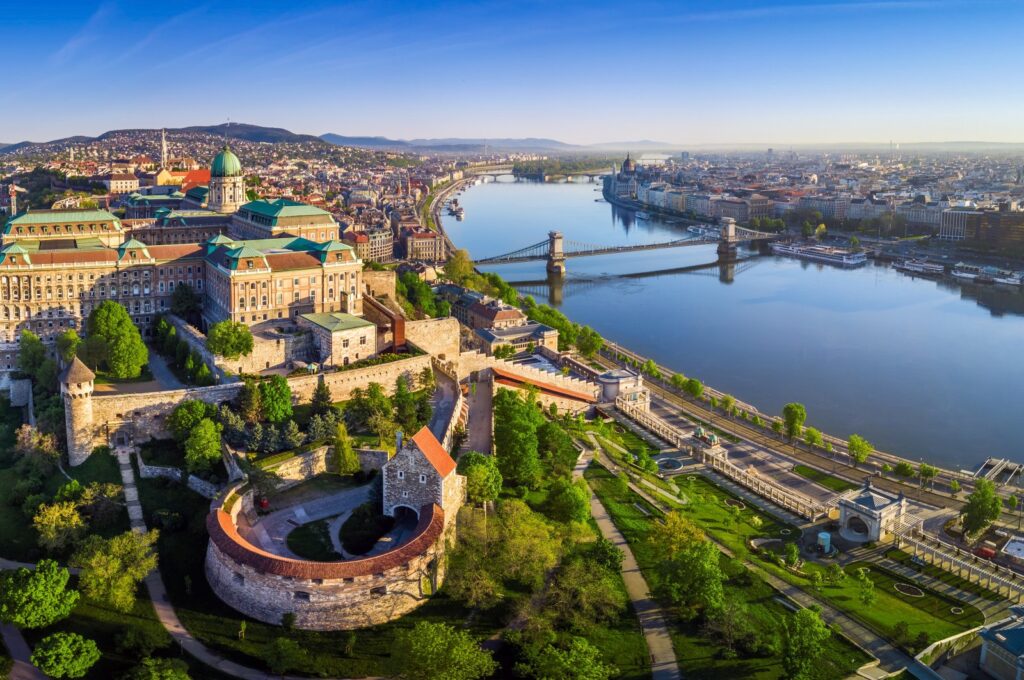
Matt Hanson
ISTANBUL: The district of Emirgan, on the shores of the Bosporus, is famed for the elegance of its residential architecture, and the infatuation of its citizens with their natural surroundings, metropolitan and yet remote
There are many boats that encircle the shores of Beşiktaş, a busy juncture for travelers and commuters alike. A few are headed upstream, toward the Black Sea, where the quarter of Emirgan is situated. Once having floated past the decadent Çırağan Palace and the various inlets that snake by the towering castle embattlements of Anadolu Hisarı, including an artificial island, there are countless shorefront mansions, untold sights and the visions of a city embedded in forests and waterways that stretch outward, upward, and within its more pastoral environs.
Emirgan is a quiet neighborhood of thin, sloping alleys, as verdant as it is historical, carved along its outer edge by a thoroughfare of constant traffic from Sarıyer to the urban core. When arriving from Beşiktaş one of the first and most apparent landmarks is a tall, broad-limbed plane tree that presses skyward out of a glass encasement, behind which the restaurant Helva hums with the bustle of families and travelers. And if entering the quarter by land, perhaps on foot for a long jaunt along the Bosporus promenade, a Japanese garden awaits.
The district’s Emirgan Park hosts a tulip festival, in which rows of the multicolored flower’s blooms are displayed in various arrangements, bursting from the ground like rainbows emerging from the soil. Within the homes of its locals, many of which are renovated to revitalize the maroon-hued wooden houses of their ancestors, the breezy streets are lined with evergreen palm trees that fan passersby and hush the ambient mood of study and repose. The sound of a marble fountain swishes in the afternoon daze.
Emirgan is a place where Istanbul’s older residents have retreated just far enough away from the cosmopolitan craze of the downtown and youth-centric neighborhoods not to feel entirely detached from its beating heart. On one of its green cliffs, overlooking the rolling hills of the Bosporus where little village-like quarters dot its intimate horizon, the world-class curations of Sakıp Sabancı Museum hosts a wealth of exhibitions, detailing the unsung art history of Turkey from traditional calligraphy to modern painting, alongside famed global contemporaries
To sip in style
It is not uncommon for a passing conversation in Emirgan to hold, in one breath, references to artists like Ai Wei Wei and Marina Abramovic, while simultaneously discussing something humdrum and local. The neighborhood has a classic, almost Aegean elan, in which the rural and urbane meet and share their thoughts in what might feel like a never-ending harmonious flow of human interaction, at once introspective but also social. That is the air of its opening plane tree tea garden that doubles as a fine bistro.
Emirgan is the kind of cityscape that seems to taper off into an arboreal wilderness, as its newfangled, concrete seaside boardwalk wraps around, inwardly, into marine vistas of bucolic oblivion. From an anthropocentric perspective, Istanbul’s sprawl allows some, like those who inhabit Emirgan, to live within the singular vitality of the Bosporus ecology, so as to enjoy a brush with the roots of nature while still entangled in the course of heavy urbanization that has claimed most of the city with its iron grasp.
There is warm, homey Turkish traditionalism in Emirgan. Its kitchens steam with the familiar scents of cheese melting over a “pide” bread, as confectionaries and dairy shops collaborate on milk-infused sugary delights. Like an excursion to one of the Prince Islands, venturing on a day trip to Emirgan from within Istanbul can have the feeling of a getaway, as its fresh markets and food stalls are replete with yogurt cultures and dessert recipes, “sahlep” in the winter and ice creams in the winter.
The culinary spirit of Emirgan, as part of Istanbul’s northern regions, is also along the southwestern reaches of the Black Sea. Its land-based knowledge and domestic customs have been cultivated and shared back and forth across the Bosporus strait by the diverse, multicultural communities of Istanbul and its adjacent countries since time immemorial. But amid the influx of fusions, the district retains an individual spirit altogether distinct from nearby Arnavutköy downstream or Beykoz on the other shore.
As a welcome guest
For anyone who might be intimidated by the seemingly exclusive geography of Emirgan, it is best to imagine what life might be for a local who skips past its waterfront facade of extroverted, cultured society, so as to burrow within the cozy confines of leaves and flowers, perhaps while lucky enough to grow a home garden with a view of the intercontinental strait that flows with the memories of storytellers and visionaries who sung of the city, and whose voices have not faded among those who read, quietly, keeping their eyes open at night.
Among the tales that have all but faded from communal remembrance in the neighborhood is the origin of the name, Emirgan. It refers to the Ottoman statesperson Emirguneoğlu Yusuf Pasha, whose legacy is celebrated in the idle pursuit of happiness and peace in Emirgan Park, or spiritual solace at Emirgan Hamid-i Evvel Mosque. And as a curious urban explorer might have boarded a ferry from Beşiktaş to experience its pacifying moods, so they might stand at Emirgan Pier, an antique wooden outfit, and sail away just as tranquilly.
Courtesy: Dailysabah
The post Under the plane trees: Taking a stroll in Emirgan appeared first on The Frontier Post.








